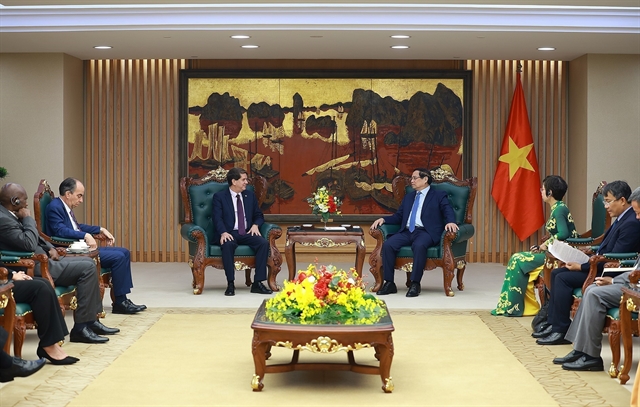 Politics & Law
Politics & Law

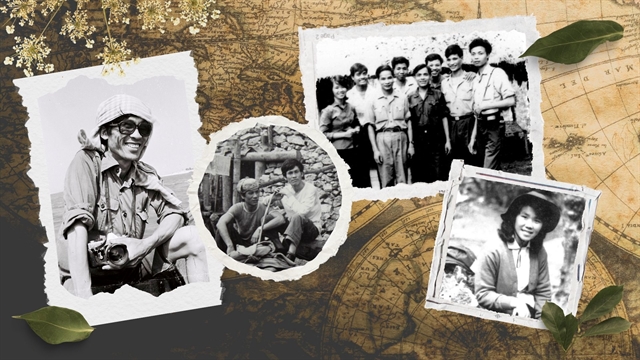 |
| Việt Nam’s press has been shaped by generations of young people who choose to contribute to national independence. VNS Graphic |
By Nhật Hồng
Việt Nam’s revolutionary press emerged during a turbulent chapter of the nation’s history, marked by uprisings against colonial powers, and a long struggle for independence and territorial integrity that spanned nearly the entire 20th century.
As the country marks 100 years of revolutionary journalism, only a handful of war reporters remain able to pass their lived experiences on to future generations.
Photojournalist Trần Hồng and news editor Vương Nghĩa Đàn were among the last cohorts of war correspondents to enter the battlefield over five decades ago, yet the memories of those days remain vividly etched in their minds.
At 26, Trần Hồng was dispatched to the frontlines as a photographer embedded to a liberation army unit. The images he and his colleagues captured in the war zones were often developed on the spot.
Down in a makeshift darkroom in a bunker, they would poke a hole in banana leaves, which were wrapped around a flashlight, and develop the films they shot.
“It was a tough yet incredibly thrilling time for us war journalists,” he told Việt Nam News.
From 1973 to the 1980s, Hồng was present on battlefields across Việt Nam, documenting the army’s battles in the Trường Sơn mountain range to the northern borders, and subsequently Phnom Penh to capture the crimes of the Khmer Rouge.
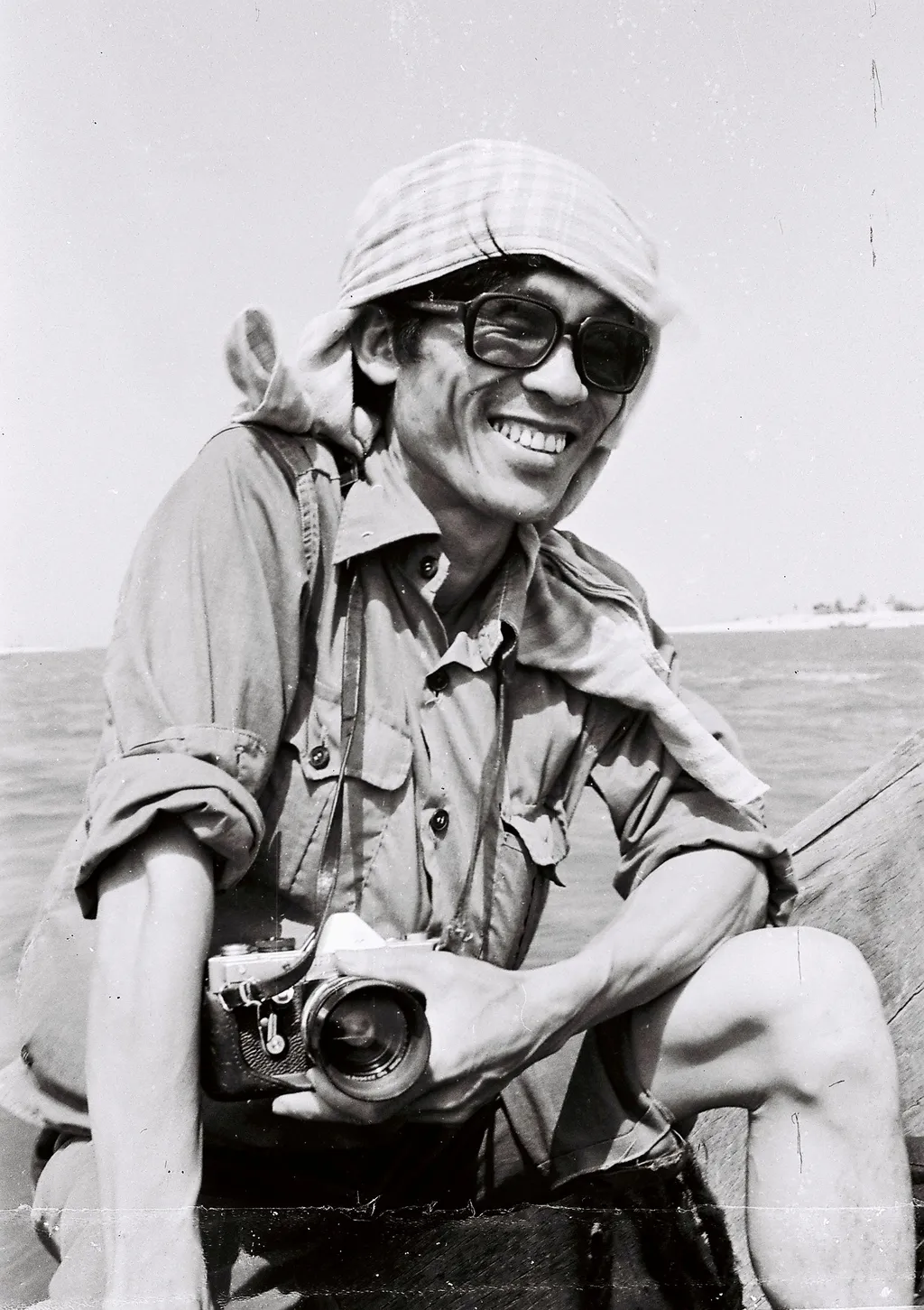 |
| Photojournalist Trần Hồng on an assignment in Trường Sa (Spratly) Islands in 1982. — Photo courtesy of Trần Hồng |
The works of front-line journalists like Hồng did not reach newspaper pages or radio air waves on their own. Hundreds of technicians, editors, telegraphists and couriers were quietly working behind the scenes to bring news stories and images from the battlegrounds to the audiences nationwide.
Among these people was Vương Nghĩa Đàn, one of the first female reporters of the Liberation News Agency during the anti-American war, which later merged with the Vietnam News Agency (VNA) following the national reunification in 1975.
News stories at the time were transmitted to the news office via Morse code, Đàn recalled. “We often had to make guesses as we went along, because the signal quality was very poor," she said.
Morse code, lacking the tone marks essential to the Vietnamese language, made their work all the more challenging.
 |
| Vương Nghĩa Đàn and her colleagues at work in the 1973-74 period, at an office they set up themselves in the forest of Lò Gò Xa Mát (Tây Ninh Province). — Photo courtesy of Vương Nghĩa Đàn |
After telegraphists decode the information sent in by the liberation troops or local forces from the front lines through Morse code, Đàn and her editing team would transform these pieces of news into coherent, digestible articles.
These were then handed over to another team of technicians, who encoded and sent them out to newsrooms and radio stations located in the north.
Photographs for important news were also sent using telegraphs, or physically transported via mail trucks or soldiers heading back to the north – all of which cost immense time and effort. At times, these precious images were lost forever when bombings struck the couriers on the way.
Youth's spirit
Hồng and Đàn were among the many other young people of their generation who chose to postpone their university studies to fight for national liberation.
“The spirit of the youth back then was incredibly unique,” said Đàn.
Đàn was in her final year of university when she chose to join the Liberation News Agency’s reporter class GP10, which was bound for the southern front in 1972.
“1972 was an intense year in the war – the entire nation was mobilised for the battle fronts in the South,” she said, recalling that it was mostly young workers and farmers who went to war before, but that year, even university students were recruited.
When asked why she made such a pivotal decision just months away from her graduation, Đàn said: “It was such a fervent atmosphere, and our education has always emphasised patriotism and sacrificing for our own country – and that touched me.”
After eight months of training on both reporting skills and physical endurance, she and her classmates embarked on a long journey to the south.
From the tri-border area between Việt Nam, Laos and Cambodia, her team continued to travel on foot for more than 500km under the enemy’s observation aircraft and air attacks, to the forests of Lò Gò Xa Mát, now a national park in Tây Ninh Province.
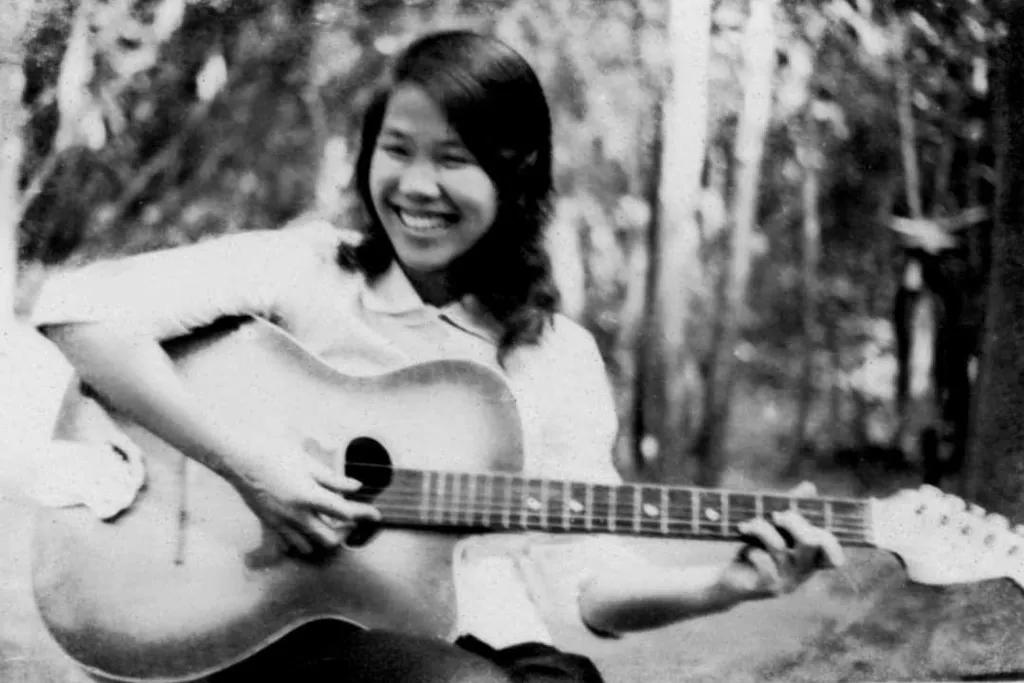 |
| News editor Vương Nghĩa Đàn circa 1973-74 in her team's base in Lò Gò Xa Mát (Tây Ninh Province). — Photo courtesy of Vương Nghĩa Đàn |
Meanwhile, Hồng turned down two university admission offers to become a soldier in 1968, working on military logistics and communication. But just one year later, he was selected to study journalism at the Central School of Communication and Training, now the Academy of Journalism and Communications.
He had worked as a photojournalist since he graduated in 1973. Newspapers back then often listed numbers of injuries and deaths in the battles, he said, but there were very few pictures.
“As a photographer, I felt compelled to do whatever it took to get the evidence of the other side’s losses and defeats,” said Hồng. To him, photojournalism was about the truth.
Yet at times, he found himself caught between his commitment as a soldier and his compassion as a human being.
“I had never seen death before [working as a war photojournalist]. The dead might not be on the same side as me, but we are all humans after all – we are of the same kind, so it was heartbreaking,” Hồng recalled.
Lasting legacy
After the war, Đàn continued her career at VNA’s southern bureau, later becoming one of the first staff members of Le Courrier du Vietnam, when the agency took over the country’s only French-language news publication from the Ministry of Foreign Affairs in 1993.
She stepped down as head of the Economic News Desk in 2003 to serve a three-year term as a VNA resident correspondent in Belgium.
Upon returning to Việt Nam, she continued contributing to Le Courrier du Vietnam until the pandemic surge in 2021, concluding her journalism career that spanned over five decades.
 |
| Vương Nghĩa Đàn worked as a news editor and correspondent for nearly 50 years, from 1973 until 2021. — VNS Photo Nhật Hồng |
Meanwhile, through unwavering determination and perseverance, Hồng produced some of his most acclaimed work after the war: more than 100 photographs of General Võ Nguyên Giáp in his daily life, and nearly 70 portraits in a series titled ‘Vietnamese Heroic Mothers’ – women whose children sacrificed their lives in the wars for national cause.
These collections of work have been taken over by the National Archives Centre and the Vietnamese Women’s Museum.
“That’s where those photographs should be, in proper preserving conditions, where they can continue spreading their values. It is my greatest legacy, my greatest joy,” said Hồng.
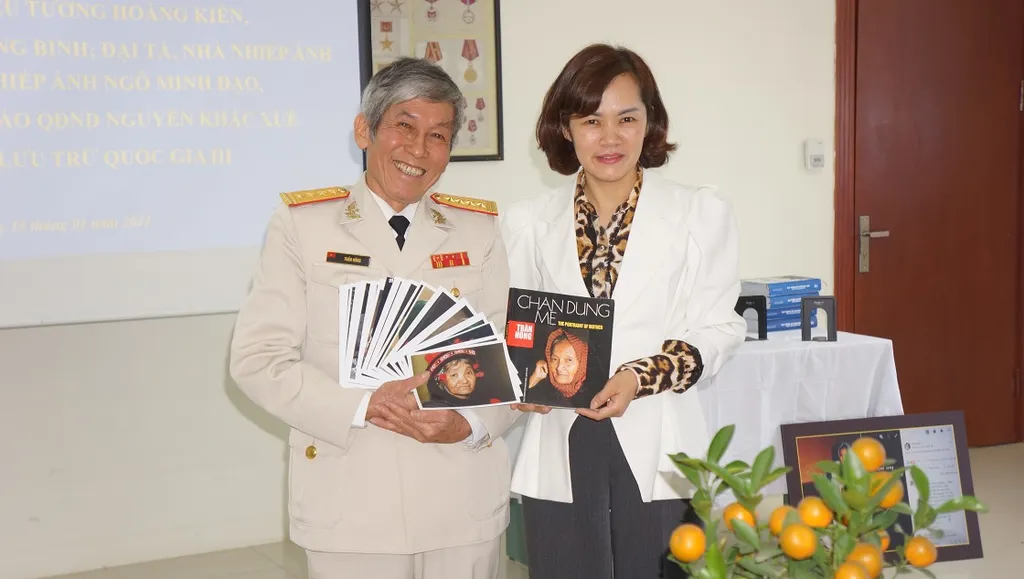 |
| Sen Col Trần Hồng (left) presents his photos of Vietnamese Heroic Mothers and General Võ Nguyên Giáp to Trần Việt Hoa, director of the National Archives Centre III in 2022. — Photo tapchisonglam.vn |
"The presence, voices and works of revolutionary journalists remain both a source of pride and a powerful bridge through which younger generations can connect with history," said Trần Thị Kim Hoa, a member of the Advisory Council at the Việt Nam Press Museum.
"It is these real, specific people who breathe life into history, making it vivid and dynamic rather than simply archival materials.
“We have a responsibility towards those who came before us, the journalists who made contributions not only to the history of the press but, more broadly, the national revolution history,” she added.
Drawing from her experience as the first director of the Việt Nam Press Museum and now a member of its advisory council, Hoa observed that many of the challenges faced today echo those raised by journalists decades ago – from education, family and justice to economic matters and the preservation of cultural values and heritage.
"When younger generations of journalists engage with the legacies of their predecessors, they gain not only insights for their careers but also lessons for their life journeys," Hoa said.
“Beyond professional insights, these are lessons in how to live, how to conduct oneself, how to uphold integrity and intellect and how to dedicate and sacrifice for a cause.
“And perhaps the greatest lesson for us is the spirit of contribution, dedication to one’s profession and the willingness to sacrifice for ideals.” — VNS

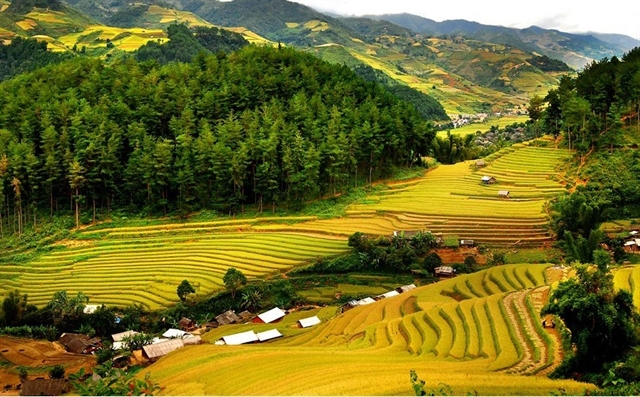
.jpg)

